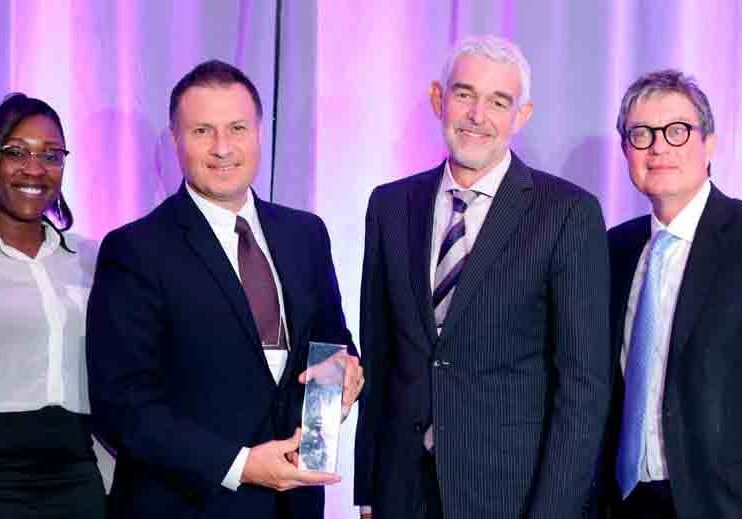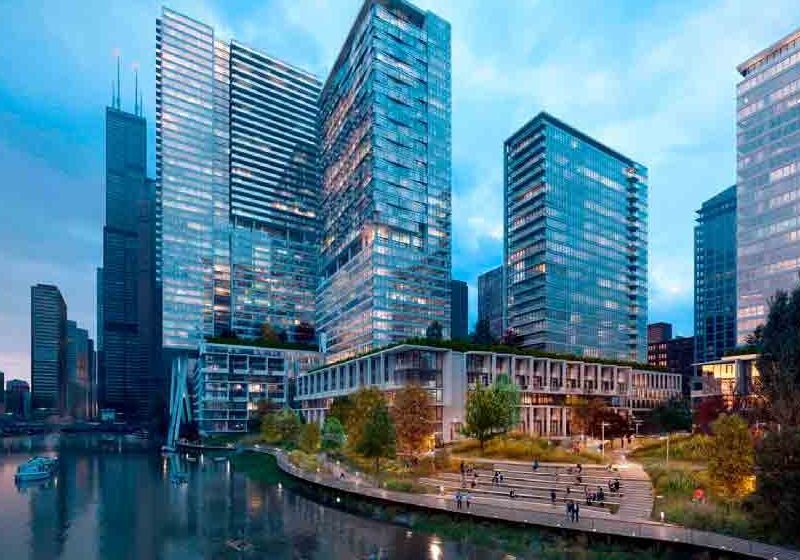A Trip Through Time & Around the World
May 1, 2018

This Readers Platform celebrates the 125th anniversary of the escalator.
submitted by thyssenkrupp Elevator
Imagine a world where the dream of being transported upward via a moving staircase was simply that — a dream. Urban mobility would look significantly different today, and be far more complicated, had it not been for a man who, while attempting to create New York City’s (NYC) first double-decker subway, came up with something even more important. More than 125 years ago, Jesse Reno invented the first working escalator, which was patented on March 15, 1892. The first escalator, then known as an incline elevator, was installed on the Old Iron Pier at Coney Island in NYC on January 16, 1893. The moving stairway elevated passengers on a conveyor belt at a 25˚ angle and traveled only 7 ft.
The escalator ran for two weeks at Old Iron Pier before moving to the Brooklyn Bridge. It is estimated it carried 75,000 passengers during its two weeks at the Old Iron Pier. Today, more than 100 billion people in the U.S. use escalators every year.
Technology has led to great design diversity. Traversing 790 m, Hong Kong’s Mid-Level Escalator Link (ELEVATOR WORLD, November 2017) is the world’s longest escalator system. The longest individual escalators are found deep underground in the St. Petersburg metro system, where the conveyances are up to 138 m long and 69 m high.[1] In Prague and some Russian cities, people travel on escalators at high speeds, with some moving passengers at 0.9 mps.
Fine-Tuned by thyssenkrupp
The technology Reno developed 125 years ago has been fine-tuned over the years by companies including thyssenkrupp. Today, thyssenkrupp solutions are installed all around the world, in huge numbers. If all thyssenkrupp escalators were joined together, they would be long enough to scale a mountain with a height of 500 km.
Escalators range from only 890 cm long up to one that measures 53.68 m. Escalators spanning just three or four steps are often used in palaces or museums. There are “royal mode” escalators designed for kings and queens that easily start and stop with the press of a button and even mobile solutions that can be carried around the world in airplanes. (Remember the Saudi king’s golden escalator?)
Mobile escalators can be carried onboard aircraft for use at any airport in the world. With their own emergency generators, they are completely self sufficient and need not be connected to an airport’s power supply. The first mobile escalators were made by thyssenkrupp Elevator in 1983 for the ailing Soviet leader Konstantin Chernenko.
thyssenkrupp escalators can be found in the most extreme and unlikely locations. The highest location thyssenkrupp has installed an escalator is in the Alps, where the conveyance is fitted with anti-slip treads to prevent skiers from falling. There are even underwater installations: at Shanghai’s Ocean Aquarium, visitors travel through a transparent underwater tunnel on two thyssenkrupp escalators, allowing them to focus on the sea life around them. Installations in hotter regions of the world feature cooling units for the handrails.
Form and function drive the design of escalators. Moving walks can be combined with escalators to create an “up-over-up” escalator. The longest such installation is 10 m long and can be found at Antwerp Central station in Belgium. Escalators with just one balustrade, and, therefore, one moving handrail, are permitted in restaurants, because staff carrying trays have only one hand free. thyssenkrupp’s first suspended escalators were installed at Westminster Court in London. Mounted on connecting rods attached to the dome of the building, the escalators crisscross the open space of the atrium.
Some installations are all about style. One of thyssenkrupp’s most striking is in Harrods department store in London, where spectacular Art Deco cladding make the escalator an attraction in itself.
The layman probably doesn’t realize all escalators are custom made. There is a standard, basic structure, but height, width, incline, speed, motor and energy efficiency vary depending on customer specifications. Sometimes, time is of the essence: thyssenkrupp’s fastest delivery was for a state visit in Riyadh, Saudi Arabia, where two escalators were delivered and in operation within two weeks.
Generating Jobs
Today, approximately 155,000 people are employed in the elevator and escalator industry worldwide. In Germany alone, there are approximately 18,000 such employees. In Hamburg, thyssenkrupp runs Germany’s only escalator factory. The company also maintains approximately 25,000 escalators in Europe. A mechanic cares for up to 40 escalators per month. In Germany, escalators have only been manufactured in serial production since 1950. Before that, they were built onsite by hand. The first escalators left the Hamburg plant in 1951.
In Europe today, there are more than 136,000 escalators installed — 35,600 in Germany. An average escalator’s lifespan is up to 30 years before it has to be modernized, but there is still growth ahead, with some additional 5,500 new escalators coming online every year in Europe. The global escalator market is experiencing moderate growth.
The escalator’s 125th birthday is an occasion for thyssenkrupp to celebrate, look back at history and into the future with potential technical developments that continue to make urban mobility smarter.
References
[1] Wikipedia. “Escalator” (en.wikipedia.org/wiki/Escalator).
Get more of Elevator World. Sign up for our free e-newsletter.








